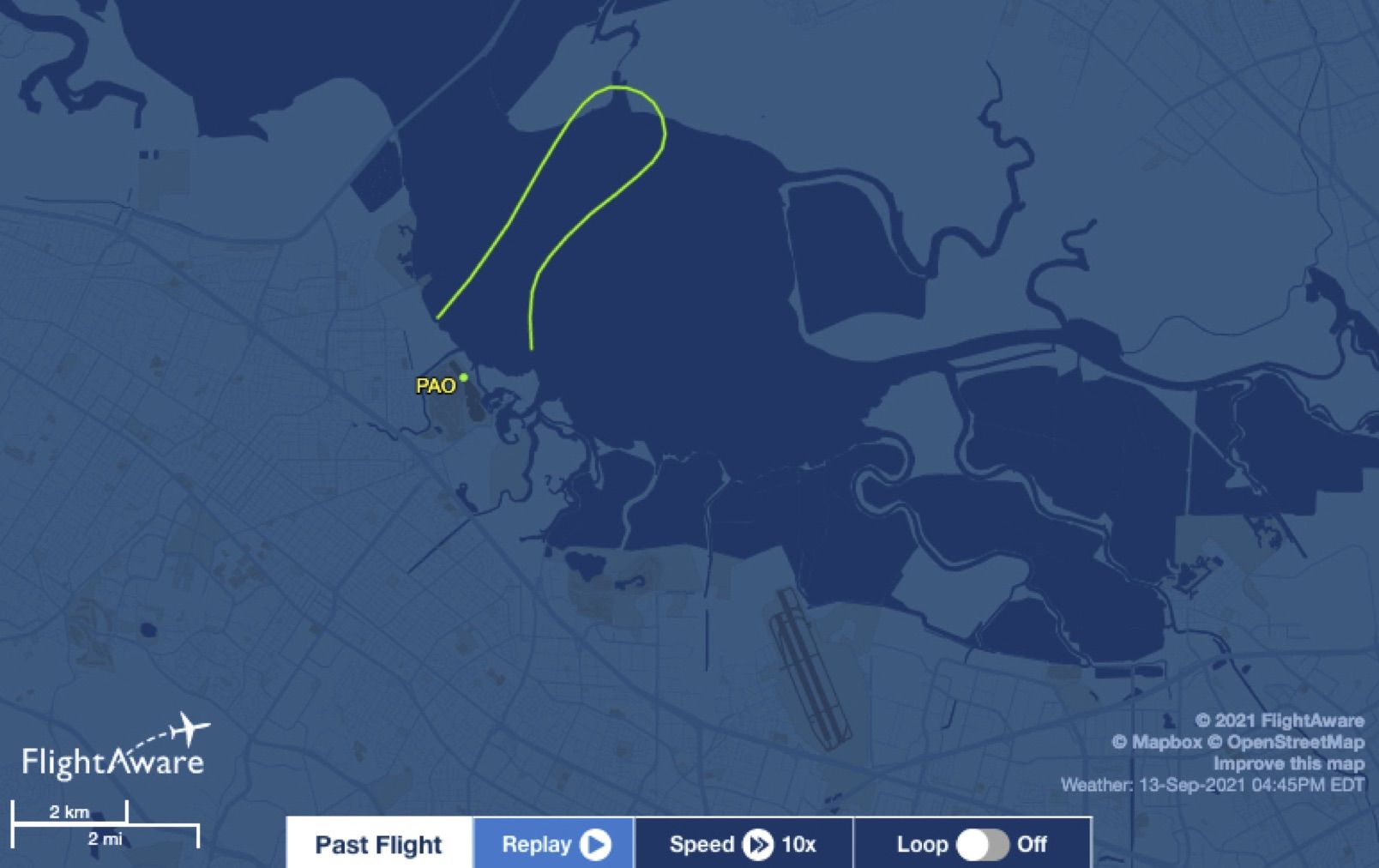Combining local news reports and flight data from FlightAware, the particulars of a Beech Baron crash landing early this week suggest a confusing sequence of events. The good news is that the pilot, (reportedly) an 80-year-old Vietnam veteran, was the only one on board and is alive and well. FlightAware data, which does not pick up the airplane until it was a few miles from the airport, still suggests a very short flight. The 1982 B58P (pressurized) Baron twin was first recorded by ADS-B at 1:47 p.m. local time after departing California’s Bay Area Palo Alto Airport (KPAO). The flight data concluded just three minutes later after the Baron struck power lines and crash landed in rugged scrub brush terrain, ripping off the left wing outboard of the engine. FlightAware listings indicate the Baron never exceeded 500 feet of altitude, according to ADS-B data.
Reporters wrote that the pilot was a former Naval aviator and, according to his daughter, he “likely relied on his muscle memory in making Monday’s difficult landing.” The flight track on FlightAware shows a U-turn pattern from KPAO, northeast over San Francisco Bay, and buttonhooking back west to its final resting point nor far from the departure airport.
FAA registration data shows the Baron is operated by Faford Aviation Leasing under a partnership. The original certification was in November 1991, with the most recent action in May 2021. The registration expiration date is listed as Oct. 31, 2024.
Recent flight activity includes two flights within the past several days—a 1-hour, 20-minute trip from San Jose (KSJC) to Reno, Nevada (KRNO), on Sept. 9; and a 59-minute flight on 9/11 from Reno to Palo Alto.




































Word around town is that it was mistakenly fueled with Jet-A.
Pardon my ignorance of expensive twins, but how can that still happen, with duck-bill nozzles and all? Did someone refill a fuel truck with the wrong grade?
Avgas and Jet refuelers have different bottom loading fuel couplings. Also, the J-spout can still be used to carefully fuel airplanes such as Bonanza turbo-prop conversions or Malibu Jet Prop conversions. It is not idiot-proof unfortunately.
When I was a “line boy” 50 years ago, I can’t imagine anyone putting kerosene in a Barron. If that is the case here, one might expect that fueling folks need training.
Glad to hear the pilot survived ok. Interesting that there was no reported fire.
My son worked line service for a nationally known fbo franchise for 5 years. We had many conversations about the lack of training and knowledge of new hires. Generally speaking they’re ignorant of airplane types, and don’t understand what distinguishes ‘turbo-charged’ from ‘turbine’ powered aircraft. In one instance a know-it-all new hire who was an Army Air National Guard member put 1 gallon instead of 10 gallons of avgas in a 172. Yeah fault the pilot for not reading the ticket before signing it but they ran out of fuel short of destination. In other instances line personnel damaged airline aircraft while maneuvering the truck for fueling (3 separate instances). In one incident a line person yanked the nosewheel of a Cirrus over a nose chock with a tug and cracked the nosewheel faring, not to mention the stress placed on the nose gear. Yikes! My son and I agree that there should be FAA mandated training and certification for line personnel. That seems to be one area that the FAA has been remiss and might enhance safety.
This is copied from the story:
according to his daughter, he “likely relied on his muscle memory in making Monday’s difficult landing.”
Hummm – Hopefully, I will NOT get dementia in my muscles!!! Ughh. how awful